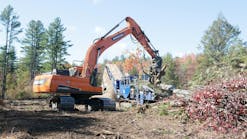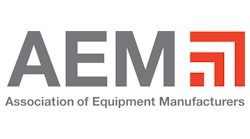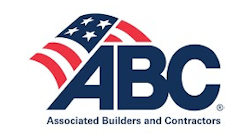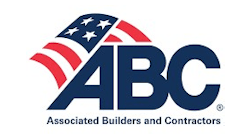A work site accident changed the trajectory of Ryan Lanser’s career in the construction industry. “I was paving a project in traffic one day, got hit by a dump truck, and thrown into oncoming traffic,” he says. Returning to work for light duty following a few months of recovery, Lanser was directed by the company’s senior estimator to work out of a small trailer on a digitizer board doing takeoff on a program called Agtek Site 98. Lanser spent years perfecting the takeoff process, eventually learning how to build surveying models. He eventually started his own company, California-based Affordable Site Model, providing earthwork take-offs, GPS machine control models, and estimating services. He also provides Unmanned Aerial Vehicle drone-based services through SkyDirt Aerial Dirt Solutions, providing construction project inspections, aerial imaging, site topography, progress billing measurements, pre-job and post-job flights, production monitoring, and as-built flights.
What He Does Day to Day
Lanser arrives at the office a few hours before everyone else to deal with East Coast clients. “I am able to get a lot more done before all of the team shows up and the phone starts ringing,” says Lanser. “Then the staff arrives and we go to work to meet our deadlines.” Lanser’s days are focused on quality control, communication, and meeting deadlines, which he calls “huge” driving factors in the industry. He spends most of the day communicating with clients, staff, and managers. He meets with staff at the day’s end to ascertain completed tasks and those still requiring attention, including changes or revisions on completed projects that must be completed in a timely manner.
What Led Him Into This Line of Work
Lanser started in the construction industry as a field laborer, then worked his way up to a motor grader operator, and eventually crew foreman. After his job site accident and the retirement of the company’s senior estimator, Lanser was promoted to estimator, and then became the company’s operations manager and chief estimator. The company was performing 100% residential subdivision work, and after the housing market collapsed in 2008 and 2009, went out of business. He took a training job offered by Agtek, moved to Texas, and trained six people over a year. He moved to California in 2011 and started Affordable Site Model. “I took my time, built it slowly, and was patient,” he says of his now successful business.
What He Likes Best About His Work
“We are so good at what we do that even the largest companies in this industry send us their hardest work,” notes Lanser. “Most of the takeoff work we get is challenging both in design and deadline. I get a rush when trying to figure out a complex job, do it correctly and on time. Some would call it stress, but I have been around deadlines in estimating my entire life, and I almost don’t feel normal unless I am being pushed by a difficult deadline. You would be surprised what you can do day in and day out when your entire business is deadline-driven.” Lanser says he also loves teaching the craft of earthwork takeoffs, “taking an intern fresh out of college and spending two or three years training them with all of my knowledge from the last 20 years in business and then watching them take off and grow on their own. It is very rewarding. We provide our interns with a lifelong career whether they stay with us or move on to other ventures.”
Trying to juggle the waves that come with construction work is his greatest challenge, notes Lanser. “The GPS machine control business is rapidly growing right now as construction booms and the technology is more affordable and more readily available,” says Lanser. “We expect big growth in our drone 3D modeling and GPS machine control model building divisions in the next five years.” While his company once did 90% earthwork takeoffs and 10% GPS machine control models, machine control now comprises 60% of the time, with earthwork takeoffs comprising the rest. “Finding and training enough talented staff to stay ahead of the growth is definitely going to be my biggest challenge in the next five years,” he notes.











